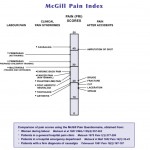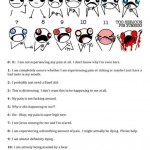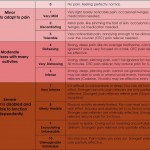This year at Medx ePatient Carly (@CarlyRM) presented a panel on the pain scale and how it doesn’t necessarily transfer over to chronically ill patients. I was one of her test subjects and for 3 months submitted pictures of myself. These pictures were matched up to the pain scale number I was feeling that day (1-10 scale).
Take a look at my collection of pictures and tell me if you’d believe me if I walked into your office or told you my pain scale number.
So what’s the best way to determine your pain level? What scale do you use? There are so many different schools of thought out there. Some don’t take chronic pain into consideration, some take the disease/illness into consideration, some are purely a guessing game and some are funny.
Here are a few different pain scales out there:
Personally, ‘A Better Pain Scale’ is the best pain scale out there 😉 haha I base my 1-10 pain scale on my own pain experiences – especially the pain I experienced when I was admitted to the hospital in 2012. I couldn’t keep still because the pain was causing me to shake, I couldn’t move one centimeter without horrible pains, and I wasn’t able to put weight on it until the following summer. At the time I told everyone it was a 100 on a scale of 1-10. Looking back on all the pain I’ve experienced and putting it on my own 1-10 scale, I consider that my 9. Like Hazel says in The Fault In Our Stars “I’m saving my 10.”
In the Medx session we had a discussion on pain scales and how they can be most effective. It was agreed that in order to be most beneficial, an individualized pain scale should be created between the patient and the health care provider. It’s also helpful to explain your pain by giving examples.
For instance, “This hurts more than when I was in labor”
or
“This isn’t as severe as the last episode”.
Giving real life examples that your health care provider can relate to will describe your situation better.
Here is a few shots from the Medx panel:
While giving an arbitrary score from 1-10 to describe your pain isn’t the greatest form of expression, it is the best that we currently have. The reason many don’t think highly of the tool is because everyone experiences pain differently. Everyone has a different pain tolerance. And everyone will express their emotions differently. My 6 could easily be a non-chronic pain person’s 9.
I believe the most important thing to keep in mind is that everyone’s pain scale is highly individualized. As patients we need to make sure that we’re descriptive and honest with our health care providers. If you form a trusting relationships with them, and an individualized pain scale, then you can have an honest, understanding partnership.
Wishing You A Pain Free Day! (Or for a chronic person a 1-3 pain scale day! haha)




































